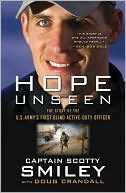Lifting the Fog of War
Is the United States an exhausted superpower? Recent military operations in Iraq, Somalia, and Kosovo have resulted in defeat or stalemate. America's key weaponry is fast becoming obsolete, and its men and women in uniform are disenchanted. Yet the U.S. remains committed to a wide variety of conflicts around the world and is increasingly confronted by threats against which traditional military power will be ineffective.\ As Vice Chairman of the Joint Chiefs of Staff during the first Clinton...
Search in google:
Is the United States an exhausted superpower? Recent military operations in Iraq, Somalia, and Kosovo have resulted in defeat or stalemate. America's key weaponry is fast becoming obsolete, and its men and women in uniform are disenchanted. Yet the U.S. remains committed to a wide variety of conflicts around the world and is increasingly confronted by threats against which traditional military power will be ineffective. As Vice Chairman of the Joint Chiefs of Staff during the first Clinton administration, Admiral Bill Owens saw the challenges facing the U.S. military firsthand. In this trenchant, fascinating, and forward-looking book, Owens explains the full extent of the military crisis and proposes bold new solutions to revolutionize the armed services. Instead of spending trillions of dollars to update obsolete weapons systems, he argues, the Department of Defense should take advantage of recent advances in computing, communications, and satellite technology and bring our military into the Information Age. These changes—collectively known in defense circles as the Revolution in Military Affairs or RMA—would transform the way that America wages war, bringing about a smaller, stronger, and more flexible military better able to monitor enemy forces in real time and thereby counter the "fog of war" that has bedeviled commanders throughout history. Lifting the Fog of War offers both an insider's account of today's armed forces and a vital blueprint for a more effective and affordable military tomorrow. For the paperback edition, the author has written a new preface about the Bush administration's attitudes toward military reform. Michael Ignatieff Makes a brisk and convincing case for . . . radical reform. —New York Review of Books
\ \ \ \ \ Introduction\ At the dawn of the twenty-first century, the United States remains the world's sole superpower, and the U.S. armed forces are operating in critical hot spots from Korea to Kosovo and from the Adriatic Sea to the Arabian Gulf.\ Ten decades after the naval victories at Manila Bay and Santiago de Cuba in 1898 that propelled the United States onto the world's stage, our Navy warships steam unopposed in every ocean. A half century after its warplanes waged strategic bombing campaigns against imperial Japan and the Third Reich, our Air Force can launch precision-guided weapons at the enemy, or transport troops and equipment nonstop from the United States to any spot on earth. A quarter century after the decision to end the military draft, the U.S. armed forces are manned by highly educated, technologically adept professionals. A decade after U.S. ground forces triumphed in the Iraqi desert, our Army and Marine Corps are deployed on the ground from the Korean demilitarized zone to Kuwait. And ten years after the collapse of the Soviet Union, our strategic nuclear arsenal is still an overwhelming deterrent to any nation contemplating attacks by weapons of mass destruction on American soil or, indeed, anywhere else.\ The United States today spends more on defense than the NATO allies, Japan, and South Korea combined. Our nation's $281 billion defense budget in 1998 (compared with the NATO allies' total of $202 billion) represented 34 percent of all world military spending, up from 30 percent in the previous decade. The Pentagon budget dwarfed the military spending of Russia ($40-$64billion) and China ($37 billion).\ But the U.S. military is in serious trouble today.\ The armed forces have been reduced in size by 40 percent in the last decade, but are still largely structured as they were during the Cold War. The unrelenting pace of overseas deployments, humanitarian missions, and other unscheduled operations is straining military units and personnel to the breaking point. Combat readiness—the measurement of a unit's ability to carry out its wartime mission—is declining throughout the military. The four combat services—the Army, the Navy, the Air Force, and the Marine Corps—are struggling with unanticipated personnel shortages owing to a sharp decline in first-term enlistments and an exodus of experienced, mid-level career specialists drawn to civilian life by the booming domestic economy. As a result, military units are being forced to operate with as much as 10 percent fewer personnel than are needed to fill their ranks. And the Pentagon faces a crisis in its attempt to modernize the force because it has insufficient funds to purchase the next generation of warships, combat aircraft, and other military hardware to replace equipment that will become obsolete within the next decade or two.\ There is no contradiction in those two descriptions of the U.S. military today. We have a topflight force that is running on empty, performing admirably with a growing number of weapons systems—including tactical fighter aircraft, Navy warships, and military transport helicopters—that are twenty to twenty-five years old and are becoming obsolete. Our men and women are suffering burnout as they are deployed in one crisis after another because our political leaders cannot understand the stress their policies have created. This situation cannot go on for much longer without dire results.\ Many consider the debate over the future of our military a complex technical matter that is far removed from the daily concerns of the average American citizen. But the exact opposite is true: For decades we have enjoyed economic prosperity, burgeoning global trade, and political stability with our major allies because of the U.S. military's success in deterring aggression and safeguarding our national interests here and overseas. We have become so accustomed to the benefits of our military security that we fail to recognize how vulnerable we would be to aggression, instability, and terrorism without it. Yet that is the precise risk we now face.\ Despite its ability to carry out difficult and complex missions today, the U.S. military confronts a crisis in the decade ahead that—if ignored—could threaten a general collapse of its ability to execute the requirements of the current—or any future—national military strategy.\ An assessment of the effectiveness of the overall U.S. national strategy itself, from which our military strategy is derived, would require a book of its own. But it's relevant to state here that in my assessment the Clinton Administration since 1993 has squandered our diminishing military assets on too many conflicts that did not genuinely affect the national security of this nation. As one recent report noted, "Between 1960 and 1991, the United States Army conducted 10 `operational events.' In the past eight years, the Army has conducted 26 operational events—21/2 times that number in 1/3 the time span."\ The failure to devise a coherent strategy to protect our national interests and the failure to provide a military force capable of carrying out the strategy is putting those interests at risk, jeopardizing the lives of American servicemen and women, and weakening U.S. international leadership in an era when political chaos and military danger are on the rise.\ As one group of experts warned last year, the U.S. military is heading for a budget "train wreck" by the end of the new decade. By some estimates an additional $100 billion per year will be needed for defense spending to fully modernize, operate, and sustain the military force level identified in the Pentagon's 1997 Quadrennial Defense Review. Conventional wisdom would dictate that the United States has two alternatives. Either the next President and Congress can opt to divert additional hundreds of billions of dollars into the defense budget in the year 2001 and beyond—to purchase the new weapons that are needed; to finance current operations overseas; and to pay for the expensive salary, pension, and "quality of life" programs essential to attracting and retaining new volunteer recruits. Or they can opt to reduce our military capability through inaction and default, a course that could lead to either a reduced U.S. military presence overseas or—worse—a return to the "hollow" force of the 1970s, which appeared robust but was seriously deficient in combat capability.\ Our misadventure in Iran just twenty years ago should warn us of the consequences of permitting our military strength to erode. Just five years after the fall of Saigon and the end of our disastrous intervention in Vietnam, the United States was suddenly confronted by a major crisis in Iran after the fall of the Shah and the seizure of the U.S. embassy and fifty-three American citizens by revolutionaries. We were forced to send our overworked aircraft carriers to the Indian Ocean for nine months at a time, and attempts to mount a top secret rescue mission involving Army commandos, Marine helicopter pilots, and Air Force aviators failed disastrously when several aircraft collided in the Iranian desert.\ My experience as a career Navy officer who rose to the second ranking position on the Joint Chiefs of Staff and my post-military work as a business executive involved in the global telecommunications industry has led me to conclude that neither of these "logical" solutions is acceptable.\ Unless a true international military crisis directly threatens the physical security of the United States homeland, it is unlikely that any administration or future Congress will support substantial hikes in defense spending. For all of the heated rhetoric in Congress and the White House over the adequacy of defense spending, one observer notes that neither the Clinton Administration nor the Republican Congress has substantially moved to support a major hike in spending. In fact, the overall difference between Clinton and the GOP on defense has never been greater than 2 percent of the Pentagon budget.\ And to unilaterally withdraw the U.S. military from crisis areas or strategic regions would be to abandon our world leadership position and destroy the constellation of treaty partnerships around the world that have promoted regional stability and protected our allies and our own national interests for the last half century.\ Fortunately, there is a third way by which the United States can retain its dominant military position in spite of funding constraints.\ It's called the Revolution in Military Affairs.\ \ \ But first, a personal explanation.\ I never planned to become a revolutionary—especially after thirty-four years in the Navy. In fact, when I graduated from the U.S. Naval Academy in 1962, all I wanted was to join and serve in the Navy's elite nuclear submarine service, a component of the armed forces known for its strict adherence to the ironclad rules and regulations instituted by the late Admiral Hyman G. Rickover, the "father" of the nuclear Navy.\ It's ironic that this undersea branch of the Navy was defined for history by a technological revolution—the nuclear reactor—which transformed naval warfare, set the stage for the movement of the nation's strategic nuclear arsenal to sea, and dominated the naval standoff between the United States and Soviet Union throughout the Cold War. Ironic because by the time I joined it, the submarine service itself had become a place where leadership was defined by one's ability to follow established policy, and where individual initiative was considered a character defect. One close observer described Rickover (but also could have been describing the submarine service he so totally dominated) as "yesterday's visionary, who is today's conservative, and tomorrow's reactionary."\ The military is inherently conservative, which is not totally a bad thing. Part of an individual's sense of place within military service comes from the knowledge that he or she is serving in an honorable profession and in a specific service or branch that has direct lineage to the great battles and victories of American history.\ For example, Army Rangers and paratroopers could take pride in 1998 when Saving Private Ryan appeared in movie theaters nationwide. Members of the elite 2nd Ranger Battalion at Fort Lewis, Wash., could see the patch of their unit on the shoulder of Captain Miller (the lead character, played by Tom Hanks) in a re-creation of the invasion of Normandy by three Ranger companies at sector Dog Green at Omaha Beach on June 6,1944. And the soldier Miller's unit was directed to save, Private Ryan, wore the same "Screaming Eagle" patch still worn today by 15,000 Army soldiers in the famed 101st Air Assault Division at Fort Campbell, Kentucky.\ Those of us who chose to serve in the military have much to be proud of and to commemorate.\ Unfortunately, many military people are incapable of distinguishing between pride and blind loyalty to their specific military service. This attitude often is formed at the earliest moments of a military career (for example, the Army—Navy game rivalry). I confess that in my earlier years as a submariner I felt the same sense of "my" unit's superiority as my colleagues did, and I would pass on the various put-downs such as, "There are only two kinds of ships: submarines and targets." It sounds innocuous: but often enough such rivalries become institutionalized in the interservice competition for budget funds, or when the Joint Chiefs of Staff have to decide which service will lead an emergency joint task force at the outbreak of a crisis.\ As I rose through the ranks and became entrusted with more responsibilities, I still kept the sense of identity and professional loyalty, first, to the submarine service, second, to the U.S. Navy, and third, to my country as a military officer. But I was fortunate to have two unusual career opportunities that allowed me to see the military universe from a broader perspective than is possible through the lens of an attack periscope.\ The first experience came eight years after my commissioning, in 1970, when as a lieutenant I was selected as a Chief of Naval Operations Scholar and sent to study politics, philosophy, and economics at Oxford University in England. Three decades later I can still clearly recall the fury on Admiral Rickover's face when he summoned me to his Washington, D.C., office upon learning of my selection.\ "Okay, Owens, goddamnit you can go to Oxford but you are going to study physics!" he shouted. (He always shouted.)\ "Sir, in all respect," I replied, sweat pooling down my back, "I'm going to Oxford to study politics, philosophy, and economics."\ (On returning I received another Rickover blast: "It just shows you how low my program has sunk that I'd be willing to have you back!")\ My second opportunity came in 1980, when then Chief of Naval Operations Admiral Tom Hayward selected me and a small group of other post-command officers to form the first Strategic Studies Group at the Naval War College at Newport, Rhode Island. For an entire year we were free to study, brainstorm, and travel to conduct an independent assessment of contemporary issues facing the naval service, which at that time was suffering greatly from post-Vietnam budget cuts, personnel shortages, and poor morale.\ By the time I reached the rank of rear admiral in 1989, the Navy had helped make me aware that successful leadership required moving beyond the narrow perspective of one's own military service to embrace the issues affecting the U.S. armed forces as a whole. And more important, I had come to realize that the senior leadership of the U.S. military had to come to grips with the ending of the Cold War and the complex challenges that historic transformation of the world would bring.\ It was shortly after my appointment as commander of the U.S. 6th Fleet in the fall of 1990—just as the U.S. military and our allies were mobilizing a large force to protect Saudi Arabia following the Iraqi invasion of Kuwait—that I began to learn how determined many of my senior military colleagues were to ignore the profound changes taking place.\ I was stunned one day to receive an intelligence briefing on Soviet naval operations in the Mediterranean Sea. Since the late 1960s the Soviet Navy had maintained a continuous presence of diesel- and nuclear-powered attack and cruise missile submarines in the region, operating out of their Black Sea and Northern Fleets. To counter that, the U.S. Navy had kept a minimum of four nuclear-powered attack submarines (as well as an aircraft carrier battle group) deployed in the Mediterranean, which meant that about seventeen of the Atlantic Submarine Force submarines were continuously in training, preparing to deploy, or actually on patrol in southern European waters.\ What I was told that day was that the Soviet submarines had vanished from the Mediterranean. They were no longer sailing from their home ports through the Bosporus and Gibraltar Straits to challenge the U.S. 6th Fleet. And my intelligence experts told me they appeared to have vanished for good.\ So I sent a message back to Navy headquarters in the Pentagon that we could afford to relax our three-decade-old posture of attack submarine deployments. To be prudent, I suggested reducing our nuclear attack submarine presence from four to two subs for the time being.\ Within a day or two I received a ferocious telephone call from a three-star colleague in the Pentagon.\ (Continues...)
Contents:Introduction Chapter 1: The Exhausted SuperpowerChapter 2: Seed of RevolutionChapter 3: The Technological BaseChapter 4: Launching the RevolutionChapter 5: The Lessons of KosovoChapter 6: Winning the RevolutionSuggested Reading
\ New York Review of BooksMakes a brisk and convincing case for... radical reform.\ — Michael Ignatieff\ \ \ \ \ \ ProceedingsAn insightful, must-read book for those who care about the future of the U.S. military.\ — Michael Hughes\ \ \ \ Military ReviewOwens skillfully portrays the state of America's military and offers concrete steps to solve its problems. \ — Maj Robert P. Mooney, Jr.\ \ \ \ \ \ Jay WinikImagine running your office with computer designed 30 years ago. Or shipping merchandise with a fleet of 1970's-era Ford Fairlanes. Ludicrous? Of course. But as Bill Owens tells us in Lifting the Fog of War, this is exactly what the American military does today. \ His indictment of the current military does not stop there. The military leadership, he writes, refuses to acknowledge reality. The Pentagon is trapped in obsolete ways of thinking. It is smug and guilty of political cowardice. Worst of all, the military itself has become dysfunctional and inefficient.\ Strong stuff, to be sure. But lest you think that Bill Owens is either an antimilitary crank or some out-of-the-loop zealot with an ax to grind, guess again. He is Bill Clinton's former vice chairman of the Joint Chiefs of Staff and a former commander of the U.S. Sixth Fleet. In short, someone we should listen to.\ — Wall Street Journal\ \ \ \ \ \ Jay WinikOwens makes a compelling case that . . . the U.S. is not adequately preparing for the battles of the future. —Wall Street Journal\ \ \ \ \ Michael IgnatieffMakes a brisk and convincing case for . . . radical reform. —New York Review of Books\ \ \ \ \ Michael HughesAn insightful, must-read book for those who care about the future of the U.S. military.\ \ \ \ \ Publishers WeeklyA former Vice Chairman of the Joint Chiefs of Staff, Owens expresses a familiar complaint in asserting that the U.S. is an exhausted superpower whose armed forces are overextended, underfunded and inappropriately organized for the missions they are likely to face. Accepting that too many operations on too few funds are a given for the near future, Owens makes a case for a fundamental reconfiguration of the armed forces, a "revolution in Military Affairs" that he defines as applying information technology to warfare. He is optimistic about the prospects of eliminating "fog and friction," the inability to know what is really happening on the battlefield (a position that might arguably owe something to Owens's current position as the CEO of an information systems corporation). Many of the supporting points, expressed in jargon such as "systems of systems" and "dominant battlespace knowledge," are less convincing than his analyses of Desert Storm and Kosovo, which lead to the most important feature the book: its challenge to service parochialism. Such in-group loyalties, he argues, have ultimate consequences, including radio systems that are not interoperable and budget discussions that focus on turf battles rather than national interest. His specific suggestions for reorganization rely on a standing joint force that would train and operate together permanently. The concept, modeled to a degree on current Marine Corps practice, is open to debate. Owens's insistence that the success of his "Revolution in Military Affairs" depends on choosing synergy over specialization, however, could well serve as a focal point in future discussions of U.S. security policies. (Apr.) Copyright 2000 Cahners Business Information.\|\ \ \ \ \ Library JournalHistorically, military commanders had problems getting the right information at the right time, contending with the "fog of war." Within the last decade, though, the fast growth of technology has brought a revolution in military affairs (RMA) that puts just about any information at the commander's fingertips. Admiral Owens, vice chairman of the Joint Chiefs of Staff in the first Clinton administration and present head of a division of Microsoft, presents a convincing argument that the United States should use this technology to streamline its military forces. Rather than simply piling up bombs and planes, America should form alliances and build a powerful satellite surveillance network, a reorganization that would help the country meet any threats in the 21st century. While the idea may be unpopular with military traditionalists, Admiral Owens should be commended for promoting the RMA, about which several recent books have been published (e.g., Michael O'Hanlon's Technological Change and the Future of Warfare, LJ 3/15/00). Recommended for both public and academic libraries, though the subject may appeal chiefly to history buffs or subject specialists.--Mark Ellis, Albany State Univ., GA Copyright 2000 Cahners Business Information.\\\ \ \ \ \ Edward N. LuttwakLucidly explained . . . [Owens is] a most notable military innovator, or at least he has tried to be. . . . Although sufficiently well written to please the general reader, [it] will most likely attract specialist interest.\ —New York Times Book Review\ \








